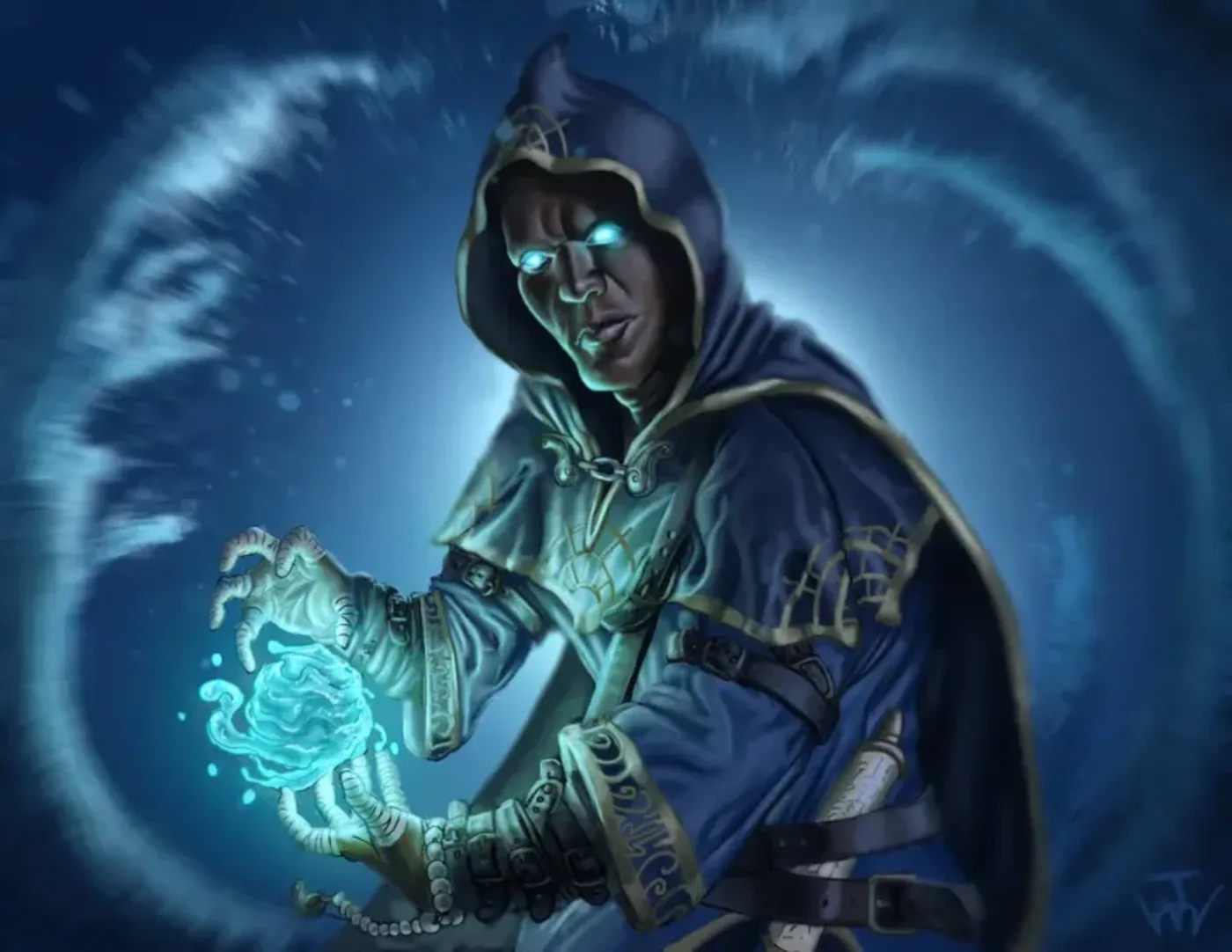
Sending Stone - 5e D&D Magical Item Spotlight
In the world of Dungeons & Dragons (D&D), magic items hold a special place. They have the power to enhance a character's abilities, shape the outcome of epic quests, and become legendary artifacts in their own right. One such iconic item is the sending stone. The D&D version of cell phones, the rocky talkies themself—these magical stones, often used as a pair, allow communication over vast distances, bridging gaps and connecting adventurers like never before.
Sound familiar? SendingStone is an app that lets players connect remotely over far distances to play TTRPGs online. Today we're going to highlight our favorite item in the Dungeons & Dragons universe. We'll be exploring the rules, lore, and its impact of the sending stone on the world of D&D.
What is a sending stone in 5e?
So, a sending stone is actually part of a set. You got two enchanted rocks that let you cast the sending spell. They usually have cool symbols or runes carved on them to show they're a pair.
The official DMG text reads:
Sending Stone Wondrous item, uncommon
Sending stones come in pairs, with each smooth stone carved to match the other so the pairing is easily recognized. While you touch one stone, you can use an action to cast the sending spell from it. The target is the bearer of the other stone. If no creature bears the other stone, you know that fact as soon as you use the stone and don't cast the spell.
Once sending is cast through the stones, they can't be used again until the next dawn. If one of the stones in a pair is destroyed, the other one becomes nonmagical.
Think of sending stones like old-school phones that can only send one text per day. You can't just hold them up to your ear and have a long chat with whoever's holding the other rock. So, that's a total of four messages each day. It's like having a prepaid sim card.
What can the sending spell do?
So, the sending spell lets you send a message of 25 words or less to someone, no matter how far away they are. You can even reach people on different planes! There's a 5% chance the message won't go through to another plane, but as long as you don't roll a 1 on a d20, you're golden.
The offical text for the sending spell reads:
Sending LEVEL: 3rd CASTING TIME: 1 Action RANGE/AREA: Unlimited COMPONENTS: V, S, M (a short piece of fine copper wire) DURATION: 1 Round SCHOOL: Evocation ATTACK/SAVE: None DAMAGE/EFFECT: Communication
You send a short message of twenty-five words or less to a creature with which you are familiar. The creature hears the message in its mind, recognizes you as the sender if it knows you, and can answer in a like manner immediately. The spell enables creatures with Intelligence scores of at least 1 to understand the meaning of your message.
You can send the message across any distance and even to other planes of existence, but if the target is on a different plane than you, there is a 5 percent chance that the message doesn't arrive.
Why bother with a sending stone?
Now, you might be wondering, if you can only send a few messages, why bother with a sending stone? Why not just cast sending a couple of times and call it a day?
Well, sending is a 3rd-level spell, available to bards, clerics, and wizards. But compared to other 3rd-level spells like Fireball, Counterspell, and Animate Dead it falls a bit short. Casters get their 3rd-level spells at 5th level, which is when the game gets more intense. Going from 2nd- to 3rd-level spells is a big power spike. Unfortunately, sending just isn't a spell you'll want to use frequently.
The lore of the sending stone
The origins of the sending stone of course depend on the setting and lore but many texts trace it back to ancient times, shrouded in myth and legend. Some tales speak of an ancient race of mages who discovered a way to imbue stones with the power of communication, while others claim that deities themselves gifted these magical items to mortals. Regardless of their true origins, sending stones became objects of great fascination and desire for many adventurers and spellcasters.
Throughout history, the sending stone has played a significant role in countless D&D campaigns and storylines. It has been used by heroes to rally reinforcements, warn of impending danger, and seek advice from wise sages. These stones have even been employed by secretive organizations to maintain secure lines of communication, transmitting vital information while keeping it out of the hands of enemies.
As time passed and new adventurers ventured forth, numerous variations and improvements to the sending stone emerged. Enchanters and artificers added enhancements to increase the range of communication, imbue them with additional magical properties, or even craft miniature versions that could be worn as jewelry. These advancements expanded the possibilities of the sending stone, making it an even more versatile and sought-after item.
Notable uses in Critical Role
The popular D&D show Critcal Role highlights the use of sending stones in a number of ways.
In Campaign One, Vox Machina used sending stones to communicate with Allura Vysoren and more popular NPCs. In Campaign Two of The Mighty Nein, Lord Diedric Sutan had a sending stone that was stolen by Caleb Widogast. Yussa Errenis and Allura Vysoren also had corresponding stones. In Campaign Three, the group known as Bells Hells purchased sending stones from a merchant named Advik. The stones were later exchanged among the members of the group. In the adventure book Critical Role: Call of the Netherdeep, various characters like James Cryon, Insight Acuere, Iwo Zalarre, and Question used sending stones for communication to smooth along story-telling with prospective adventurers.
The price of a sending stone in Exandria is around 250 gp within the Cobalt Soul and 300 gp from Advik. They come in different colors and sizes, such as palm-sized river stones or maroon stones larger than a gold coin.
Variations of the sending stone in other TTRPGs
We see magical forms of communication in other tabletop roleplaying games too. In Pathfinder we have the sending spell as well which reads:
Sending SCHOOL: Evocation; Level alchemist 5, arcanist 5, cleric 4, inquisitor 4, investigator 5, medium 3, mesmerist 3, occultist 4, oracle 4, psychic 4, shaman 4, sorcerer 5, > spiritualist 5, summoner 4, summoner (unchained) 5, warpriest 4, wizard 5 CASTING: Casting Time 10 minutes COMPONENTS: V, S, M/DF (fine copper wire) EFFECT: Range see text DURATION: 1 round; see text Target one creature SAVING THROW: none SPELL RESISTANCE: no
Description You contact a particular creature with which you are familiar and send a short message of 25 words or less to the subject. The subject recognizes you if it knows you. It can answer in like manner immediately. A creature with an Intelligence score as low as 1 can understand the sending, though the subject's ability to react is limited as normal by its Intelligence. Even if the sending is received, the subject is not obligated to act upon > it in any manner.
If the creature in question is not on the same plane of existence as you are, there is a 5% chance that the sending does not arrive. (Local conditions on other planes may worsen this chance considerably.)
A variation of the sending stone also exists in Pathfinder Adventure Path #124: City in the Deep called the Shell of Sending:
Shell of Sending
Shells of sending always come in pairs, with each shell attuned to the other. If pairs are mixed up or lost, a shell of sending can be attuned to a new shell of sending in a process that takes 24 hours.
Once per day, anyone holding a shell of sending can whisper up to 25 words into the shell. The sender’s words emerge from the second shell, audible to anyone holding the attuned shell, as long as the receiver is on the same plane of existence. If the receiver wishes, she can send a return message of up to 25 words.
Anyone eavesdropping on either sender or receiver must attempt a DC 14 Will saving throw. On a success, an eavesdropper can hear the speakers normally. On a failure, the speakers seem to be relaying gibberish and nonsense words to each other. Creatures who fail this saving throw by 5 or more are deafened for 1d4 minutes.
In Call of Cthulhu we have communication magic as well with the Dream Sending of Cthulhu which reads:
Dream Sending of Cthulhu
6th-level illusion Casting Time: 1 minute Range: Special Components: V, S, M (a handful of sand, a dab of ink, and a holy symbol of Cthulhu) Duration: 8 hours
This spell allows the presence of Cthulhu to enter the mind of a creature known to you, shaping its dreams. The target must be on the same plane of existence.
Creatures that don’t sleep, such as elves, can’t be reached by this spell. You enter a trance state. While in a trance, you are aware of your surroundings but can’t take actions or move. If the target is asleep, you appear in its dreams and can deliver a message of no more than 10 words to the target in a form reminiscent of Cthulhu or his minions. The environment of the dream, including objects and images, twists into geometrically impossible ways as omens of Cthulhu saturate it. The target must then make a Wisdom saving throw to continue sleeping normally. Regardless of the success or failure of this saving throw, the target takes 4d6 psychic damage and recalls the dream perfectly when it awakens.
On a failed saving throw, the target’s dream becomes a nightmare that lasts the duration of the target’s sleep and prevents it from gaining any benefit from that rest. When it awakens after failing its saving throw, the target has disadvantage on ability checks until the next dawn and it must succeed on a second Wisdom saving throw or gain a first-degree insanity (generally a phobia; see insanity rules) or indefinite madness and draws Cthulhu’s attention (GM’s discretion as to the effect of this communion). If the target is awake when you cast the spell, you know it, and can choose to either end the trance (and the spell) or wait for the target to fall asleep, at which point you appear in its dreams. You can emerge from the trance at any time, ending the spell early.
Concluding
Most players focus on combat or exploration spells, neglecting the roleplaying aspect. That's where the sending stone comes in handy. It allows players to use the spell without needing to be a spellcaster. Plus, it adds an immersive element to the game.
And of course, that brings us full circle to why we're such a fan of this iconic item. SendingStone is video chat with a built in virtual tabletop—not the other way around. SendingStone is all about the roleplaying aspect of playing TTRPGs online—bringing together high quality video chat with immerisve effects like AR face masks, animated backdrops, synchronized audio clips, and more. Sign up, invite your friends with just a URL, and experience the magic of instant remote connection that an adventurer using a sending stone would experience.
Share this article

Want more content?
Subscribe to get notified of new articles, upcoming adventures, new features, and more
Adventure awaits, your friends are remote, and teleportation isn’t canon in this world. Playing online is the only option.
What do you do?
hello@sendingstone.com
Privacy • Terms • Blog • Compendium • Name Generators • Beyond20 • PLAN Gaming • Pathfinder • Daggerheart • Cosmere RPG • Powered by the Apocalypse • Dungeons & Dragons • Credits
© 2025 Artificer, LLC



